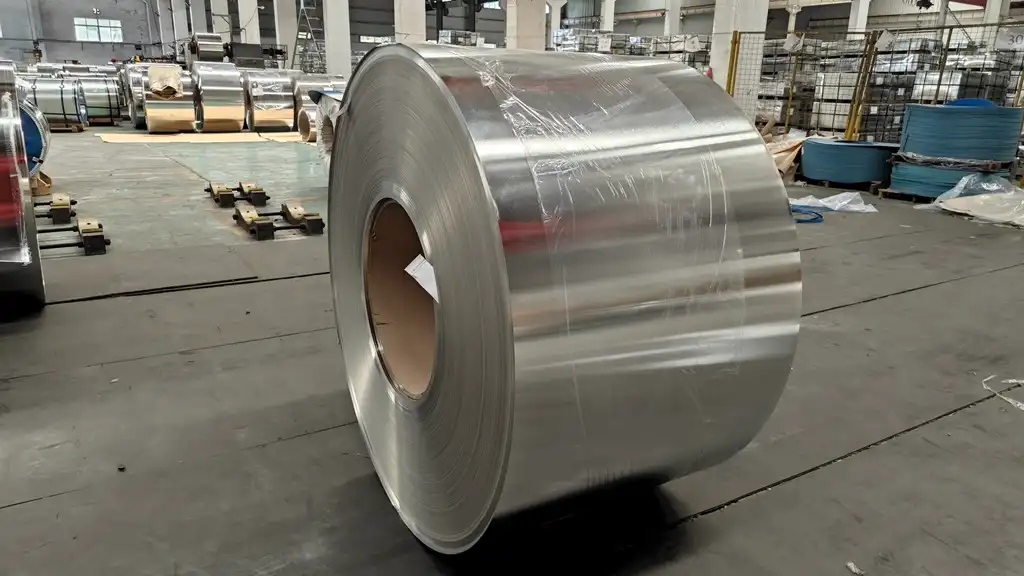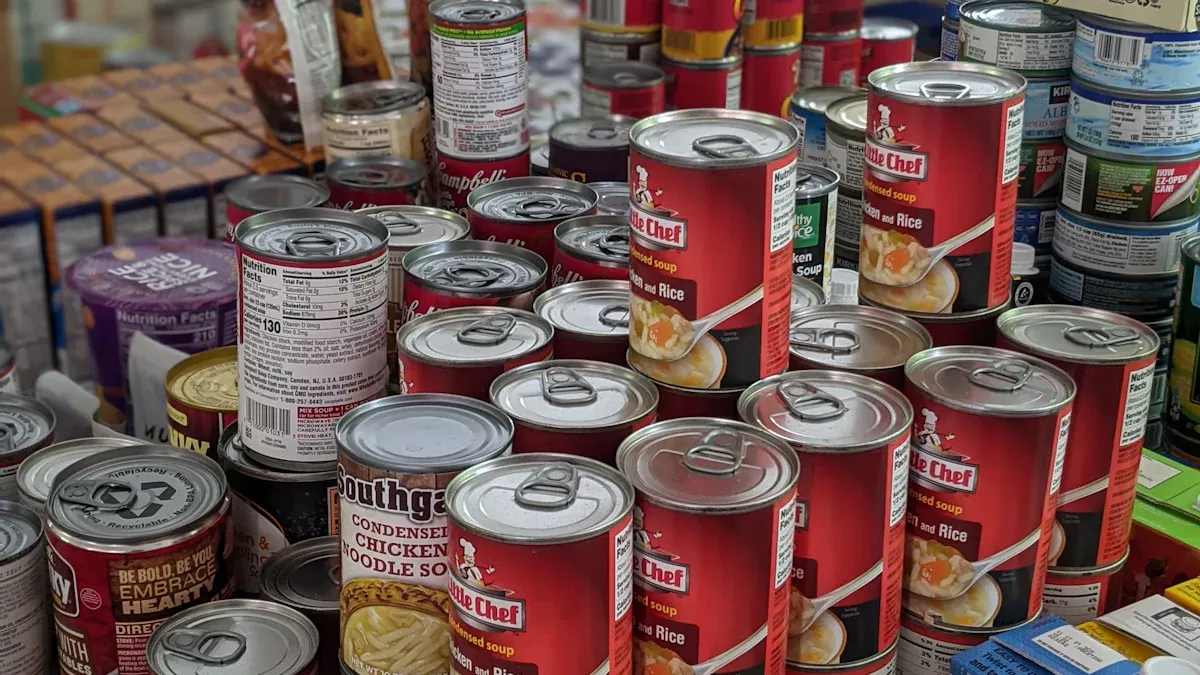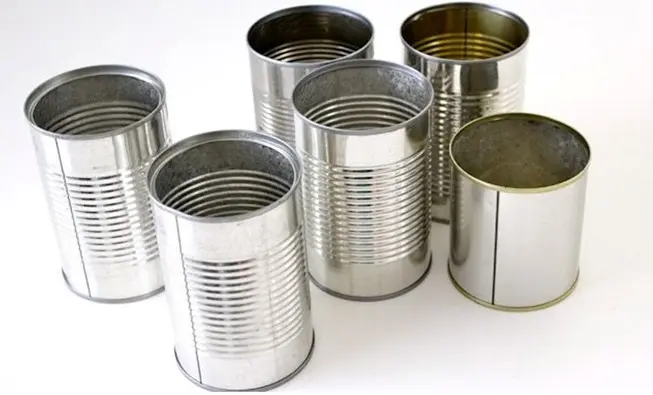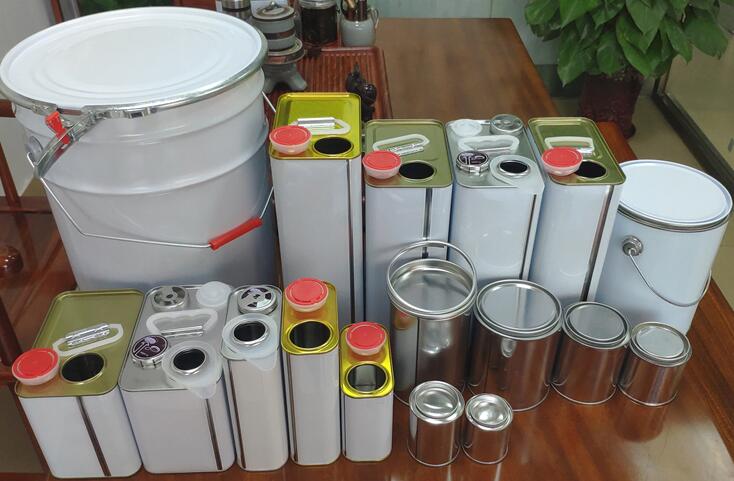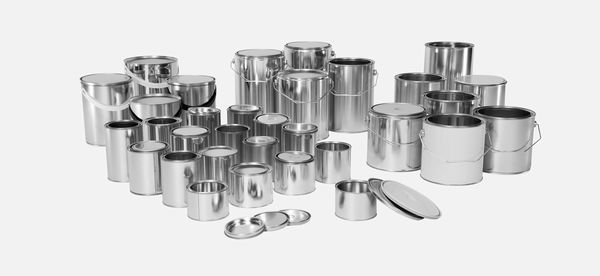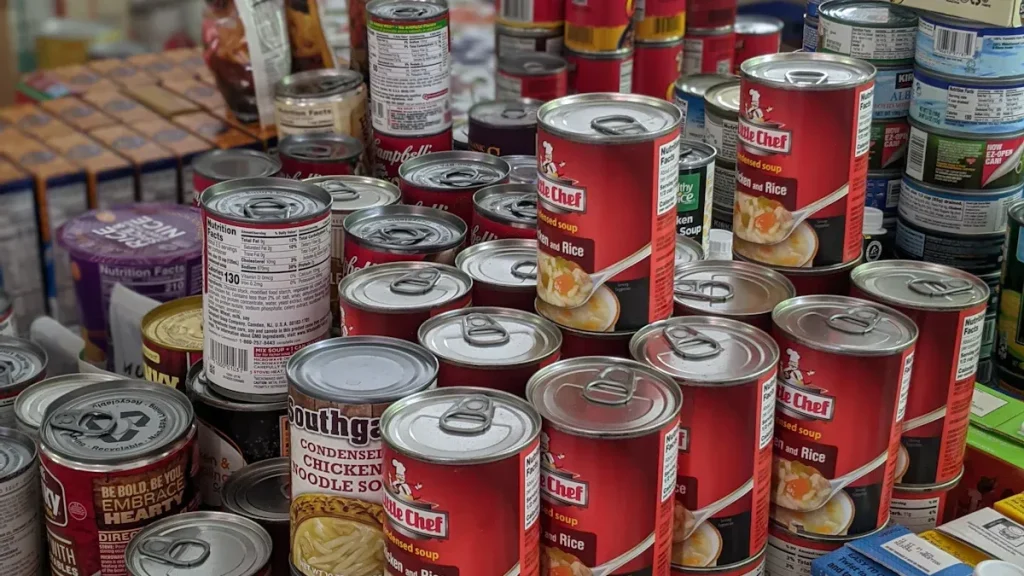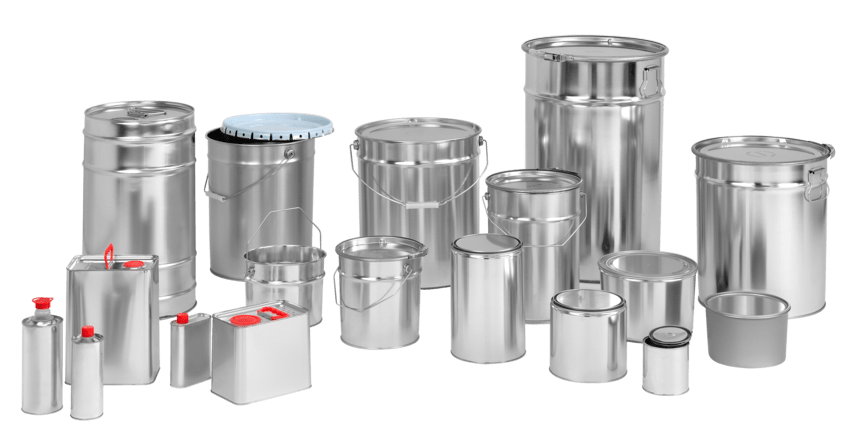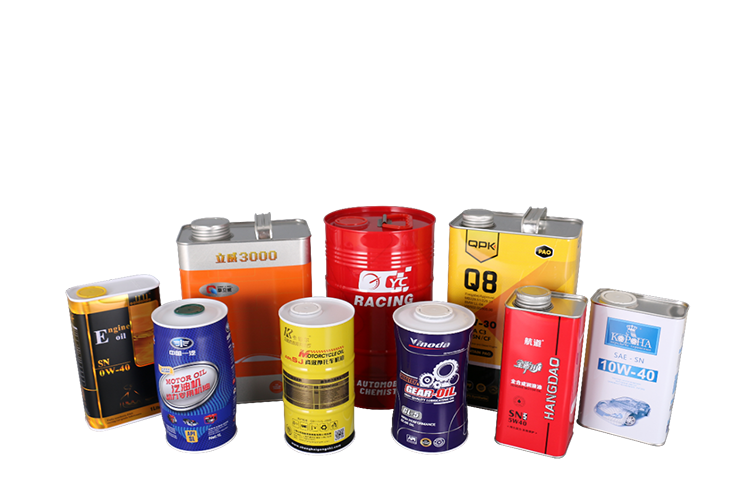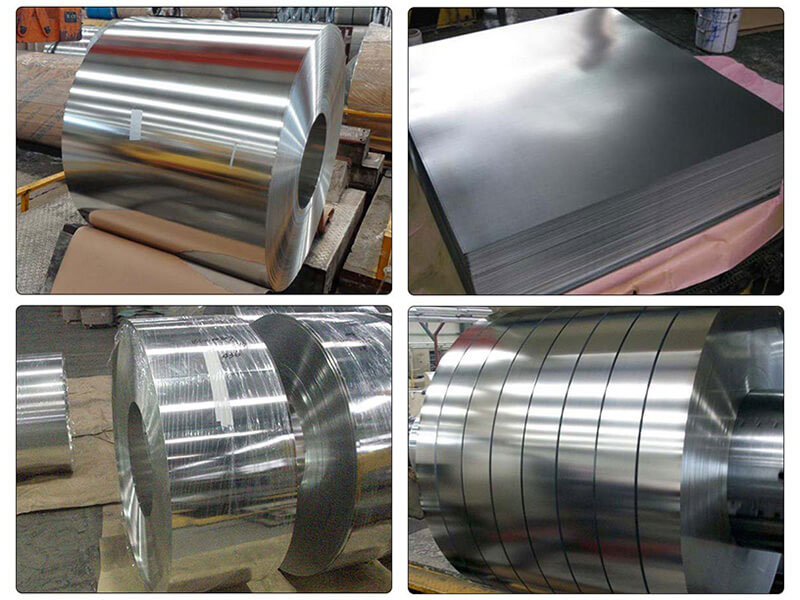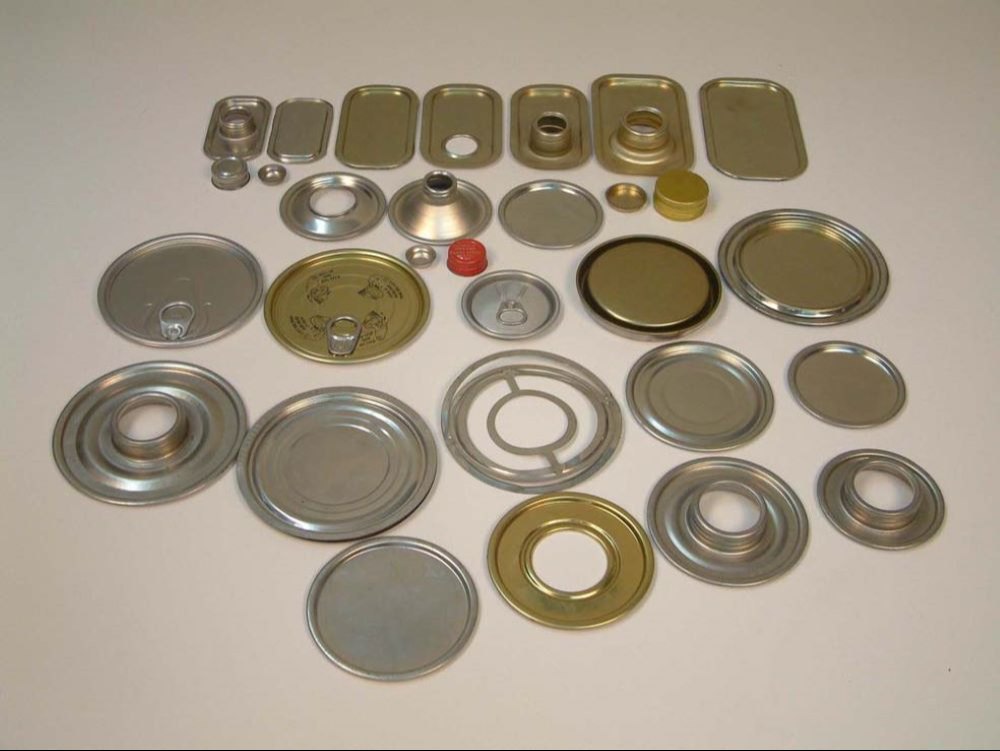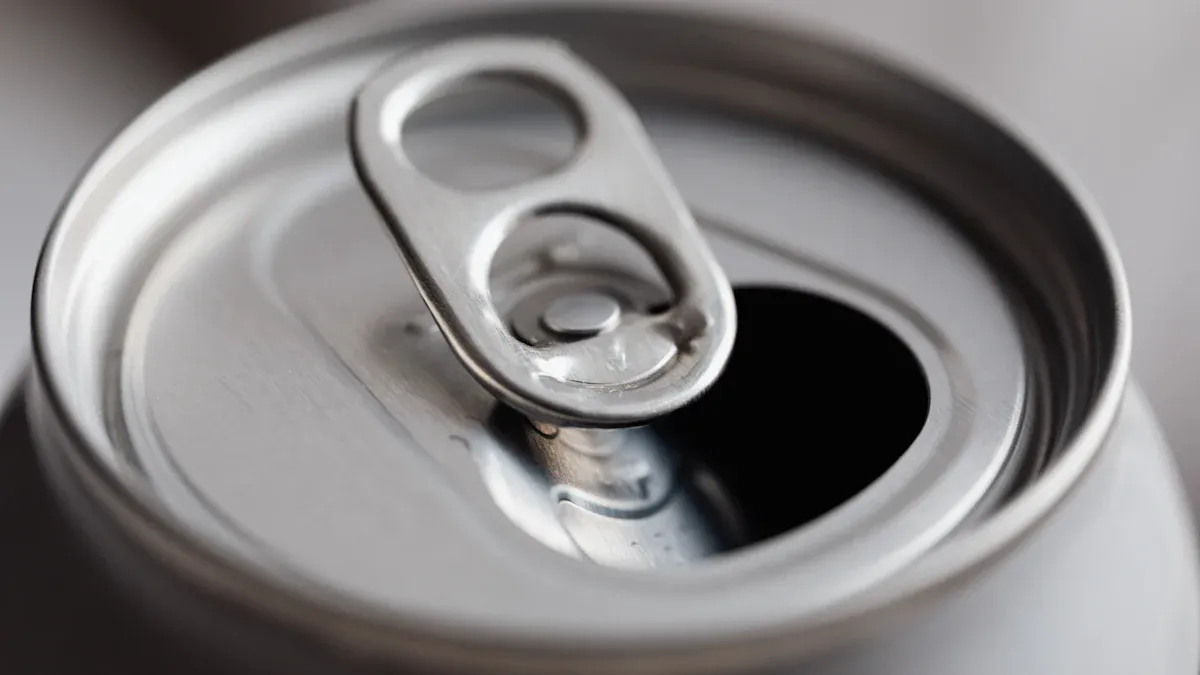
Selecting the right electrolytic tinplate for your project means paying attention to several key factors:
- Choose the correct tin coating thickness for your product’s protection.
- Match the surface finish and temper grade to your application.
- Confirm precise dimensions and high corrosion resistance.
- Work with a supplier known for quality and reliability.
You see strong demand for tinplate due to its recyclability, durability, and safe packaging properties. Witop Tinplate offers expert support to help you meet your exact needs. Always match tinplate features to your application for best results.
Key Takeaways
- Choose the right tin coating thickness to protect your product from corrosion and match your storage needs.
- Select the proper surface finish and temper grade to ensure good print quality and easy shaping of your tinplate.
- Confirm exact tinplate dimensions and check corrosion resistance to guarantee product durability and quality.
- Work with a trusted supplier who holds certifications and offers strong quality assurance for reliable packaging.
- Electrolytic tinplate is recyclable, durable, and safe, making it ideal for food, industrial, and specialty packaging.
- Match tinplate features like coating, finish, and temper to your specific application for best performance and cost savings.
- Use practical tools like thickness and hardness charts to choose tinplate that fits your production and product needs.
- Witop Tinplate provides expert support, quality control, and flexible logistics to help you get the right tinplate on time.
Electrolytic Tinplate Basics
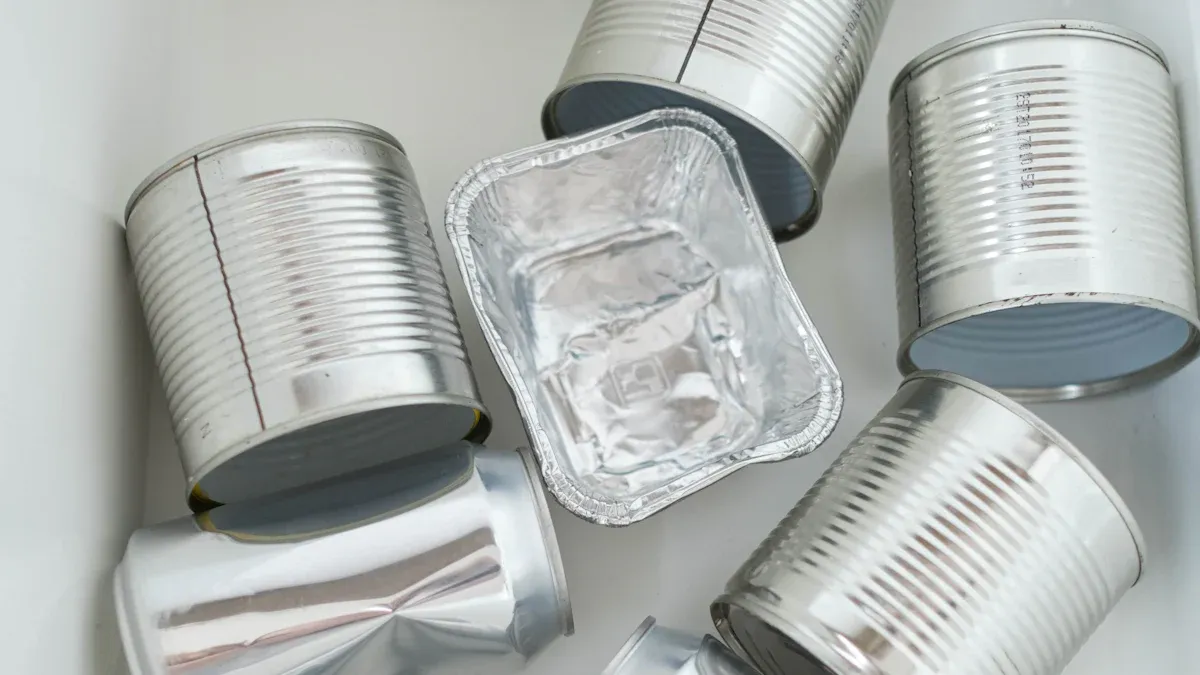
What Is Electrolytic Tinplate
You often see electrolytic tinplate used in packaging, especially for food and beverages. This material combines a thin layer of tin with a steel base. Manufacturers apply the tin coating through an electrolytic process, which ensures a uniform and controlled finish. You can find electrolytic tinplate in both tinplate sheet and tinplate coil forms, making it easy to match your production needs. The steel core gives strength, while the tin layer protects against corrosion and adds a shiny, attractive surface. You will notice that tinplate sheet is ideal for making cans, lids, and closures, while tinplate coil works well for continuous manufacturing lines.
Key Properties
You should understand the main properties of electrolytic tinplate before choosing it for your application. The table below summarizes the essential chemical and physical features:
| Property Category | Details |
|---|---|
| Chemical Composition | Tin coating deposited electrolytically from alkaline stannate, acid stannous sulfate, or stannous fluoborate baths |
| Tin Coating Thickness | Typically 0.0003 to 0.0008 mm; generally at least 8 μm for corrosion protection |
| Intermetallic Layer | Thin, continuous iron–tin intermetallic compound at the steel-tin interface, enhancing corrosion resistance |
| Passivation Treatment | Chromate-based passivation film prevents excessive oxidation |
| Surface Finish | Initially matte and whitish; brightened by reflow heating above tin melting point |
| Steel Substrate | Cold-rolled steel strip with low impurities, thickness controlled between 0.15 to 0.35 mm |
| Mechanical Properties | Strength, durability, light weight, fabricability |
| Additional Coatings | Very thin oil coating prevents surface damage during handling |
| Alloy Variants | Tin-lead, tin-nickel, tin-zinc, tin-cadmium, tin-cobalt alloys modify solderability, hardness, tarnish and corrosion resistance |
| Applications | Food containers, electrical and electronic components, automotive parts |
You can see that tinplate sheet and tinplate coil both offer excellent mechanical strength and corrosion resistance. The tin coating and passivation treatment help protect the steel from rust and chemical attack. You also benefit from the flexibility to choose different alloy variants for special requirements.
Application Benefits
When you select electrolytic tinplate for your packaging, you gain several important advantages:
- Tinplate provides superior corrosion resistance, making it perfect for long-term storage of food and beverages.
- You can trust tinplate sheet and tinplate coil to meet strict food safety standards, ensuring your products stay fresh and uncontaminated.
- Tinplate is highly formable, so you can create intricate shapes and designs for cans and containers.
- The glossy finish of tinplate gives your packaging a premium look, which helps with branding and consumer appeal.
- Tinplate offers a strong barrier against oxygen, moisture, and light, which preserves food quality and extends shelf life.
- You support sustainability by choosing tinplate, as it is 100% recyclable and can be reused without losing quality.
- Tinplate sheet and tinplate coil are more cost-effective than aluminum for large-scale production, and they offer more versatile shaping options.
- Consumers often view tinplate packaging as trustworthy and high-quality, especially for food products.
Tip: By using electrolytic tinplate, you not only protect your products but also contribute to sustainability goals. Tinplate’s recyclability and durability make it a smart choice for eco-friendly packaging.
You should consider tinplate if you want a material that combines strength, safety, and sustainability. Whether you need tinplate sheet for can bodies or tinplate coil for automated lines, you will find that electrolytic tinplate meets a wide range of packaging needs.
Tinplate Selection Tips
Product and Application
You should always start your tinplate selection process by focusing on your specific product and its application. Different products require different types of tinplate sheet. Here are some practical tinplate sheet tips to guide you:
- Identify your product type. Choose the correct can size and shape to ensure the best fit and protection.
- Select the steel base type:
- Type MR works well for general use and offers good corrosion resistance.
- Type L has extremely low residual elements and suits certain food products that need extra protection.
- Type D is best for deep drawing or severe forming applications.
- Assess lid and closure options. These features help maintain product freshness and make your packaging easy to use.
- Consider printability. High-quality printing can boost your brand and attract customers.
- Check for sustainability. Eco-friendly tinplate options support your environmental goals.
- Balance cost and quality. Make sure your packaging meets performance needs without exceeding your budget.
Tip: Always match your tinplate sheet to your product’s needs. This approach ensures you get the best performance and value.
Tin Coating Thickness
Choosing the right tin coating thickness is one of the most important tinplate sheet tips. The tin coating protects your product from corrosion and affects the overall durability of the tinplate. You will find that industry standards provide clear guidance for different applications.
Here is a table showing the minimum tin coating thickness for various service conditions:
| Class | Minimum Tin Coating Thickness (inches) | Application / Service Condition |
|---|---|---|
| A | 0.0001 | Mild service, surface shielded from atmosphere |
| B | 0.0002 | Mild service, exposed surface |
| C | 0.00032 (nonferrous), 0.0004 (ferrous) | Moderate service conditions |
| D | 0.0006 (nonferrous), 0.0008 (ferrous) | Severe service conditions |
| E | 0.0012 | Very severe service conditions |
| F | 0.00006 | Short term contact and shelf-life |
You can also see the differences in tin coating thickness visually:
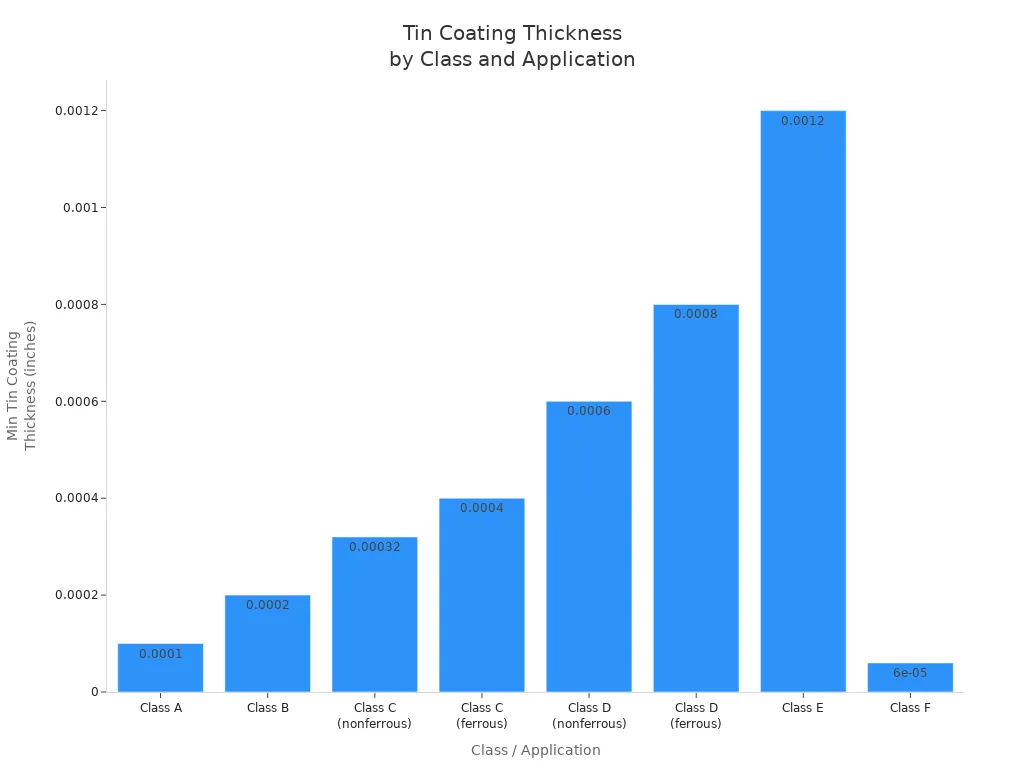
Most tinplate sheet products use tin coating weights like 2.8/2.8, 5.6/2.8, or 8.4/8.4 grams per square meter. These numbers show the amount of tin coating on each side of the tinplate. For food cans, you often need a heavier tin coating inside the can for extra protection. ASTM standards allow you to customize tin coating thickness to match your needs, with tolerances usually within ±10% of the nominal value.
Tinplate sheet tips: For products that face harsh environments or long shelf life, choose a thicker tin coating. For mild conditions, a thinner coating can save costs while still offering protection.
Surface Finish
Surface finish plays a big role in both the appearance and printability of your tinplate. You have several options, each with its own benefits. The right choice depends on your product’s look and how you plan to print or decorate the tinplate sheet.
| Surface Finish Type | Description and Impact on Appearance and Printability |
|---|---|
| Light Surface | Smooth and glossy, with a fine pattern. Enhances print clarity and gives a bright metallic shine. |
| Stonetextured Surface | Directional grindstone pattern. Adds texture and can hide scratches. May affect gloss and ink adhesion. |
| Silvercolor Surface | Rough and dull. Reduces metallic shine and changes how prints appear. |
| Mattless Surface | Matte and less glossy. Alters printability and gives a unique look, often used for crowns or artistic cans. |
You will notice that tinplate offers a beautiful metallic luster, but the surface finish can change the level of shine and the quality of printing. Smooth finishes help inks stick better and make colors look brighter. Textured or matte finishes can give your product a unique style and help hide small scratches.
Tinplate sheet tips: If you want sharp, colorful printing, choose a light or bright finish. For a more artistic or scratch-resistant look, try a stone or matte finish.
You can also customize tinplate sheet finishes with different textures and colors, including gold, to match your branding. Always test your chosen finish with your inks and lacquers to ensure the best results for your application.
Temper Grade
When you choose tinplate for your application, you need to pay close attention to the temper grade. Temper grade tells you how hard or soft the tinplate is. This property affects how well the tinplate can be shaped, stamped, or drawn into different forms. If you select the wrong temper, you might face problems during manufacturing or see defects in your final product.
You will find that tinplate comes in several temper grades, usually labeled as T1 through T5, and sometimes as DR (Double Reduced) grades. Lower numbers like T1 and T2 mean the tinplate is softer and easier to form. Higher numbers like T4 and T5 mean the tinplate is harder and better for flat or shallow shapes.
| Temper Grade | Typical Hardness (HR30T) | Best Use Case |
|---|---|---|
| T1 | 49-53 | Deep drawing, complex shapes |
| T2 | 54-57 | General food cans |
| T3 | 58-61 | Lids, shallow cans |
| T4 | 62-65 | Ends, closures |
| T5 | 66-70 | Flat parts, high strength |
| DR8/DR9 | 71-85 | Ultra-thin, high strength |
Tip: For deep-drawn cans or containers with many curves, pick a softer temper like T1 or T2. For lids or flat parts, use a harder temper such as T4 or T5.
Always check the temper grade with your supplier. This step helps you avoid cracks, wrinkles, or other defects during production. If you need extra strength with less thickness, ask about double reduced (DR) tinplate. DR grades give you high strength and save material.
Dimensions
You must select the right dimensions for your tinplate sheets or coils. The correct thickness, width, and length ensure your products fit together perfectly and meet quality standards. International standards like ISO 11949:2016 and IS 1993:2018 set clear rules for tinplate dimensions and tolerances. These standards help you get consistent, high-quality tinplate every time.
Thickness usually ranges from 0.15 mm to 0.35 mm, measured in small steps of 0.005 mm. The minimum width is often 500 mm. You should always confirm the exact size you need for your application.
| Dimension Type | Tolerance Specification |
|---|---|
| Thickness | +10% of nominal thickness |
| Width | ±3 mm of specified width |
| Length (sheets) | ±5 mm of specified length (ideally within 3 mm) |
| Length (coils) | 1 to 4 coils: ±3.5% |
| 5 to 99 coils: ±3% | |
| 100 or more coils: ±1% |
You will see that these tolerances are recognized worldwide. Standards like JIS G3303, EN 10203, and ASTM A623M all follow similar rules. When you order tinplate, always check the tolerances with your supplier. This step helps you avoid waste and ensures your products meet customer expectations.
Note: Accurate dimensions reduce scrap and improve production efficiency. Always measure your tinplate before use.
Corrosion Resistance
Corrosion resistance is one of the most important reasons you choose tinplate for packaging. The tin coating protects the steel base from rust and chemical attack. This feature keeps your products safe and extends shelf life.
To check how well tinplate resists corrosion, laboratories use several advanced tests. Electrochemical Impedance Spectroscopy (EIS) quickly measures the electrochemical properties of both corroded and non-corroded tinplate samples. Scanning Electron Microscopy (SEM) lets you see the surface and find out why corrosion happens. Energy Dispersive X-ray Spectroscopy (EDS) shows what elements are present in corrosion spots. Other tests like Atomic Absorption Spectroscopy and Polarization Methods help analyze corrosion products and behavior, though they can be harder to repeat. Inductively Coupled Plasma Mass Spectrometry (ICP-MS) detects tiny amounts of metal released during corrosion, giving you a clear picture of tinplate performance.
| Laboratory Test / Technique | Purpose / Application in Corrosion Evaluation of Electrolytic Tinplate |
|---|---|
| Electrochemical Impedance Spectroscopy (EIS) | Measures electrochemical properties and detects corrosion defects |
| Scanning Electron Microscopy (SEM) | Examines surface for corrosion causes and lacquer failure |
| Energy Dispersive X-ray Spectroscopy (EDS) | Analyzes elements in corrosion spots and surface composition |
| Atomic Absorption Spectroscopy | Checks chemical makeup of corrosion products |
| Polarization Methods | Studies corrosion behavior |
| ICP-MS | Detects metal release from tinplate during corrosion |
You should always ask your supplier about the corrosion resistance of their tinplate. Reliable suppliers test their products using these methods to make sure you get the best protection. If you need tinplate for food cans or products with long shelf life, make corrosion resistance your top priority.
Tip: Choose tinplate with proven corrosion resistance for packaging food, beverages, or any product that needs long-term storage.
Tin Purity
When you select tinplate for food packaging, you must pay close attention to tin purity. High-purity tin layers play a vital role in protecting your products and ensuring safety. You gain several important benefits when you choose tinplate with pure tin:
- Pure tin forms a strong barrier that blocks air and moisture from reaching the steel base. This barrier helps prevent rust and keeps the can body intact.
- The non-toxic nature of pure tin meets strict hygiene and safety standards. You avoid contamination of food contents and help extend shelf life.
- A smooth, pure tin surface makes it easier to process and print on the tinplate. You can achieve sharp graphics and clear labeling for your packaging.
- Pure tin supports mechanical strength and corrosion resistance, which are essential for reliable packaging.
- Tinplate with high tin purity is fully recyclable. You support sustainability and reduce environmental impact.
You should always confirm tin purity with your supplier, especially for food and beverage applications. This step ensures your tinplate meets both performance and safety requirements.
Duplex Plating
Duplex plating offers advanced protection for tinplate used in demanding environments. This process adds a nickel layer beneath the tin coating. The nickel acts as a barrier and improves the overall performance of the tinplate. You can see the main features and benefits of duplex plating in the table below:
| Aspect | Explanation |
|---|---|
| Definition of Duplex Plating | A two-layer plating system with a nickel underplate beneath a tin layer on electrolytic tinplate. |
| Function of Nickel Layer | Acts as a diffusion barrier due to its tightly packed Face Centered Cubic (FCC) structure, limiting porosity and preventing intermetallic diffusion between tin and substrate (e.g., copper or brass). |
| Benefits | – Improves corrosion resistance by reducing porosity. – Prevents formation of intermetallic compounds that degrade solderability. – Preserves solderability by maintaining tin availability and wetting ability. – Allows reduction in overall plating thickness. – Enhances durability of the plated part. |
| Specific Applications | Particularly beneficial in electrical applications where corrosion resistance and solderability are critical, and where tin alone may suffer from intermetallic formation and whisker growth. |
You should consider duplex plating if your application requires extra corrosion resistance or if you need to maintain solderability in electronic components. Duplex plating can also help you reduce the total thickness of the tinplate without sacrificing performance.
Supplier Reputation
Choosing the right tinplate supplier is just as important as selecting the correct material. Reliable suppliers help you avoid common quality issues and ensure your products meet industry standards. You should look for suppliers who hold recognized certifications and follow strict quality controls:
- ISO 9001 certification shows that a supplier maintains consistent quality management from raw materials to finished tinplate.
- ASTM standards, such as ASTM A623 and ASTM A624, define grades, coating weights, and quality requirements for tinplate. These standards help you get the right product for your needs.
- Food contact certifications, including FDA compliance and EU regulations, guarantee that tinplate used for packaging meets health and safety rules.
- RoHS certification confirms that tinplate for electronics does not contain hazardous substances.
- CE marking is required for products sold in Europe, showing conformity with health and safety directives.
- Mill certificates and certificates of origin validate the quality and source of the tinplate.
- HACCP certification demonstrates a supplier’s commitment to food safety management.
You should also watch for common quality issues, such as incorrect tin coating mass, poor passivation, or damage during transport. Problems like pitting, cracking, or dull deposits can affect the performance of tinplate. To reduce these risks, you should:
- Clearly state your end-use requirements to the supplier.
- Approve suppliers based on their certifications and track record.
- Test new tinplate batches before full production.
- Monitor raw materials and manufacturing conditions.
- Work closely with experienced suppliers who understand process controls and quality assurance.
Tip: A reputable tinplate supplier will help you meet your quality, safety, and regulatory goals. Always check certifications and ask for documentation before placing an order.
Matching Tinplate to Needs
Food Packaging
When you select tinplate cans for food packaging, you protect your products and extend shelf life. Tinplate can bodies and lids keep out air, moisture, and light. This barrier helps maintain freshness and flavor. You often see tinplate cans used for fruits, vegetables, meats, and seafood. The tin coating resists corrosion, which is vital for food safety.
You can choose different tin coating thicknesses and temper grades based on the food type and storage time. For example, acidic foods need thicker coatings for extra protection. You also benefit from the smooth surface, which allows colorful printing and branding. Tinplate cans meet strict food safety standards in many countries. You support sustainability because tinplate cans are 100% recyclable and reduce waste. The unique benefits of tinplate cans include durability, safety, and a premium look for your packaging.
Tip: Always match the can size and shape to your product. This step ensures the best fit and reduces material waste.
Industrial Uses
You find tinplate cans in many industrial applications. These include paint containers, oil cans, and chemical packaging. Tinplate can bodies offer strength and corrosion resistance, which protect contents from leaks and contamination. You also see tinplate cans used for batteries, electrical parts, and automotive components. The table below shows how you can match tinplate specifications to different industrial needs:
| Industrial Use Category | Typical Applications | Key Specifications and Properties Required |
|---|---|---|
| Food and Beverage Packaging | Canned food, drink cans, aerosol cans | Corrosion resistance, formability, food safety compliance, lacquer layer |
| Medicaments and Cosmetics | Medicine bottles, cosmetic containers | Hygienic, chemically neutral, corrosion resistance, formability |
| Industrial and Engineering Products | Electrical components, automotive parts, building products | Mechanical strength, corrosion resistance, heat resistance, conductivity, solderability |
| Decorative and Creative Uses | Jewelry boxes, gift boxes, artistic sculptures | Malleability, embossing, smooth surface for printing |
| Environmental and Sustainability | – | 100% recyclable, high durability, reduced energy use |
You should always check the specific application information before choosing tinplate cans for industrial use. The unique benefits of tinplate cans in these settings include strong protection, easy shaping, and long-term durability. You also help the environment by choosing recyclable packaging.
Specialty Applications
You can use tinplate cans for many specialty applications. These include toys, batteries, decorative containers, and imitation jewelry. Tinplate can bodies in these uses need special properties like smooth finishes, extra corrosion resistance, and the ability to form complex shapes. For example, paint cans and jumbo oil cans require strong, leak-proof construction. Specialty tinplate cans often have unique surface finishes to support printing and coating. The unique benefits of tinplate cans in specialty uses include barrier protection, moldability, and a shiny appearance. You also support sustainability because these cans are easy to recycle and reuse.
- Specialty tinplate cans protect contents from moisture and air.
- You can create intricate designs for furniture profiles or artistic items.
- Tinplate cans offer strength and a smooth surface for high-quality printing.
You should always consider the packaging needs, can size, and shape for each specialty use. This approach ensures your tinplate cans deliver the best performance and appearance.
Practical Tools
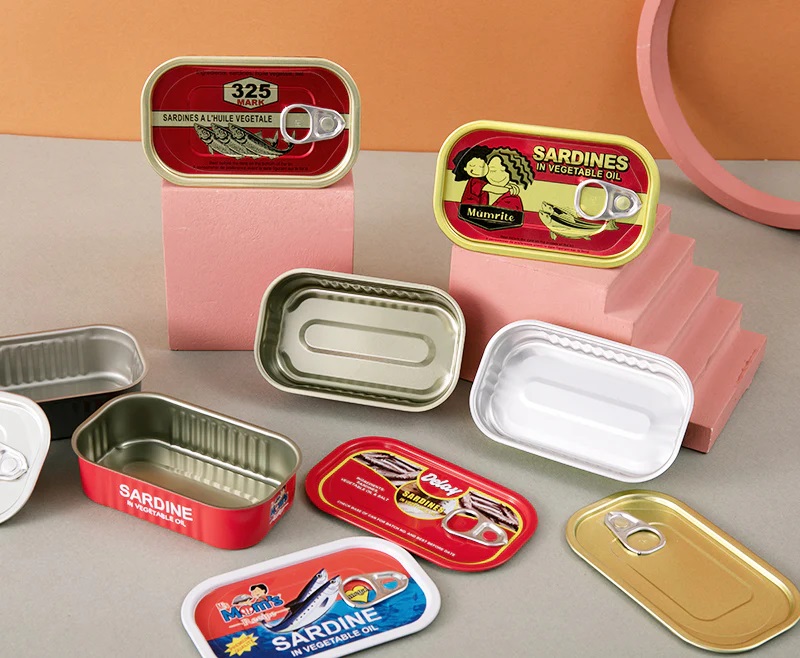
Thickness Chart
You need to know the exact thickness of your tinplate can material before you start production. Thickness charts help you convert between base weight, thickness in inches or millimeters, and U.S. gauge numbers. These charts make it easy to compare different tinplate can options and choose the right one for your needs. If you only know the weight, you can use the chart to estimate thickness and avoid confusion with your supplier. This step saves time and helps you select the best tinplate can for your application.
| Base Weight (lb/base box) | Thickness (inches) | Thickness (mm) | U.S. Gauge |
|---|---|---|---|
| 60 | 0.0066 | 0.168 | 34 |
| 70 | 0.0075 | 0.190 | 32 |
| 80 | 0.0082 | 0.208 | 30 |
| 90 | 0.0093 | 0.236 | 28 |
| 100 | 0.0104 | 0.264 | 26 |
Tip: Use this chart when you need to match tinplate can thickness to your product’s requirements. It helps you avoid mistakes and ensures your tinplate cans meet industry standards.
Hardness Table
You must check the hardness of your tinplate can material to make sure it fits your forming and sealing process. The Rockwell Hardness Test (30-T scale) is the standard for measuring tinplate can hardness. Each temper grade matches a specific hardness range. This table shows the most common temper grades and their Rockwell hardness values. You can use this table to pick the right tinplate can for deep drawing, stamping, or making flat lids.
| Temper Designation | Rockwell Hardness Range (30-T scale) |
|---|---|
| T1 | 46 – 52 |
| T2 | 50 – 56 |
| T3 | 54 – 60 |
| T4 | 58 – 64 |
| T5 | 62 – 68 |
| DR7M | 68 – 74 |
| DR8 | 69 – 75 |
| DR9 | 73 – 79 |
| DR10 | 75 – 85 |
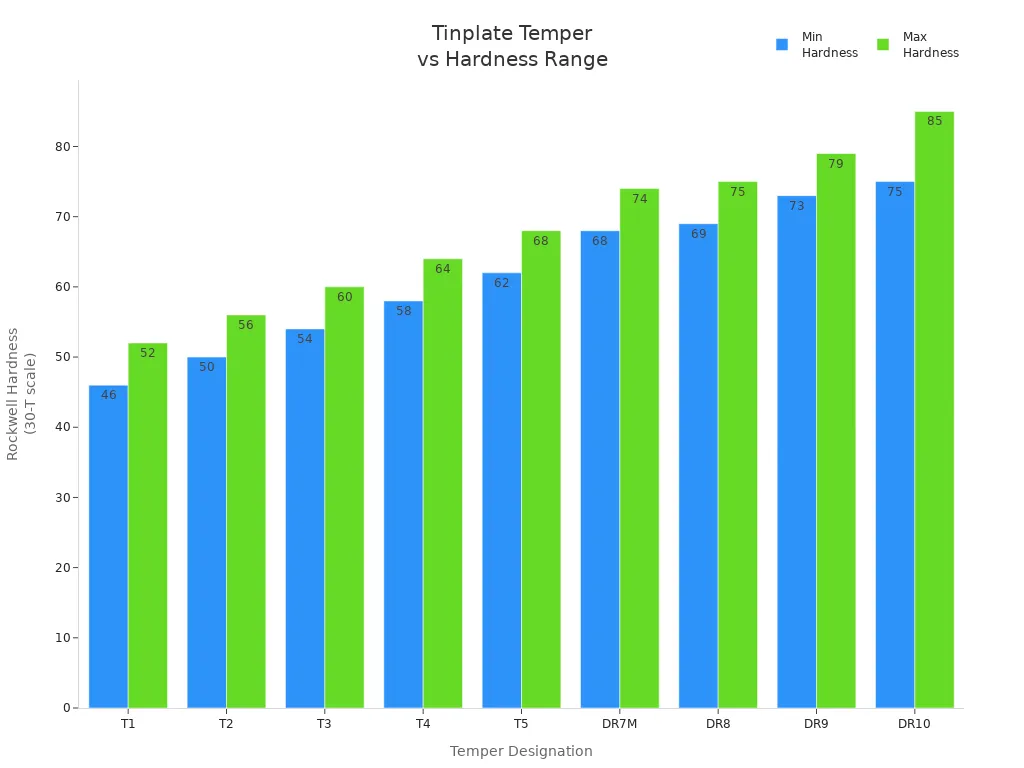
Note: Always confirm the temper grade with your supplier. This step ensures your tinplate can will not crack or deform during production.
Quick Reference
You can use quick reference tools to compare tinplate can specifications at a glance. These tools help you check hardness, coating weight, and thickness for different tinplate cans. The RSI Tinplate Reference Chart is a popular choice for engineers and buyers. It includes:
- Hardness ranges by ASTM A623 and Rockwell values
- Tin coating weights in pounds per base box and grams per square meter
- Decimal equivalents for common thicknesses in inches and millimeters
- Thickness conversion tables for base weight to thickness
| Specification | Example Value (T3) | Example Value (T5) |
|---|---|---|
| Hardness (HR30T) | 54 – 60 | 62 – 68 |
| Coating Weight (g/m²) | 5.6/2.8 | 8.4/8.4 |
| Thickness (mm) | 0.20 | 0.25 |
Use these quick reference tables when you need to compare tinplate can options fast. They help you make smart choices and keep your tinplate cans consistent.
Witop Tinplate Support
Quality Assurance
You want your packaging to meet the highest standards. Witop Tinplate understands this need and puts strong quality assurance systems in place. The company follows international standards like ISO 9001. This means you get packaging that meets both customer and regulatory requirements every time. You can trust that your packaging will stay consistent, safe, and reliable.
Witop Tinplate also holds certifications such as ISO 14001 and ISO 22000. These show a commitment to environmental management and food safety. When you choose Witop Tinplate, you know your packaging supports both quality and sustainability.
You benefit from a well-established quality control system. Witop Tinplate tests every batch for tin coating thickness, surface finish, and adhesion strength. This ensures your packaging always meets your exact needs. The company uses advanced equipment and regular inspections to keep quality high.
Here are some ways Witop Tinplate keeps your packaging consistent:
- Supplier quality checks and regular audits prevent defects like pinholes and rust spots in your packaging.
- Standardized operating procedures and process monitoring reduce variability in your packaging.
- Regular equipment maintenance and staff training help avoid defects and downtime.
- Environmental controls, such as climate monitoring, keep coating adhesion and drying quality stable for your packaging.
- Training programs and error-proofing techniques lower human error and improve product consistency in your packaging.
Witop Tinplate also verifies steel grades like MR and SPCC. These grades give your packaging the right mechanical properties and adaptability. The company follows ASTM A623 standards, so your packaging always meets industry requirements for strength, size, and surface finish.
You can see the main quality assurance steps in the table below:
| Quality Assurance Step | Benefit for Your Packaging |
|---|---|
| ISO 9001, ISO 14001, ISO 22000 | Consistent quality, food safety, and sustainability |
| Supplier checks and audits | Fewer defects in your packaging |
| Process monitoring and SOPs | Reliable coating thickness and finish |
| Equipment maintenance and staff training | Fewer errors and better packaging quality |
| Environmental controls | Stable coating and drying for your packaging |
| ASTM A623 compliance | Meets industry standards for packaging |
Witop Tinplate works with trusted suppliers who use strict quality control. You get customizable options for your packaging, such as different coating weights and surface finishes. Advanced manufacturing steps like annealing and tempering improve the strength and ductility of your packaging. Rigorous inspections during production make sure every tinplate sheet matches your requirements.
Tip: Always ask about quality assurance when you choose a supplier for your packaging. Witop Tinplate gives you peace of mind with every order.
Logistics
You want your packaging to arrive on time and in perfect condition. Witop Tinplate understands how important reliable logistics are for your business. You can trust their team to manage every step of the delivery process. They use advanced tracking systems to monitor your packaging shipments from the factory to your door.
You get real-time updates about your packaging orders. This helps you plan your production schedule and avoid delays. Witop Tinplate works with trusted carriers who handle your packaging with care. They choose the best routes to make sure your packaging arrives quickly and safely.
You can select from different shipping options based on your needs. Air freight works well for urgent packaging orders. Sea freight is a good choice for large shipments of packaging that do not need fast delivery. You can also use rail or truck transport for regional packaging deliveries. Witop Tinplate helps you pick the best method for your packaging, so you save time and money.
You receive your packaging in strong, protective materials. Witop Tinplate uses special wrapping and sturdy pallets to keep your packaging safe during transport. They check every packaging shipment for damage before it leaves the warehouse. You can feel confident that your packaging will reach you in excellent condition.
You get help with customs paperwork and import rules. Witop Tinplate prepares all the documents you need for your packaging shipments. This support makes the process smooth and reduces the risk of delays at the border. You do not have to worry about missing forms or extra fees for your packaging.
You can store your packaging at Witop Tinplate’s secure warehouses if you need flexible delivery times. This service helps you manage your inventory and avoid running out of packaging. You can request partial shipments or schedule deliveries to match your production needs.
You benefit from clear communication at every stage. Witop Tinplate gives you a single point of contact for all your packaging logistics questions. You get fast answers and helpful advice about your packaging shipments.
Tip: Always share your packaging schedule and delivery needs with Witop Tinplate. This helps them plan the best logistics solution for your business.
You can rely on Witop Tinplate to deliver your packaging on time, every time. Their logistics support gives you peace of mind and lets you focus on growing your business.
You make the best choice for packaging when you focus on tin coating thickness, surface finish, temper grade, and supplier reputation. Matching tinplate properties to your application improves both product performance and cost efficiency. See how the right selection impacts your results:
| Property/Benefit | Impact on Packaging Performance |
|---|---|
| Durability & Longevity | Reduces waste and costs |
| Barrier Properties | Preserves quality in packaging |
| Printability | Boosts branding for tinplate cans |
| Recyclability | Supports eco-friendly packaging |
Witop Tinplate guides you through every step. You can consult their experts by phone, email, or WhatsApp to get tailored solutions for your packaging needs.
FAQ
What is the difference between tinplate sheet and tinplate coil?
You get tinplate sheet in flat, cut pieces. Tinplate coil comes in long, rolled strips. Choose sheets for small batches or manual work. Use coils for automated production lines. Both offer the same protection and quality.
How do I choose the right tin coating thickness?
You should match tin coating thickness to your product’s needs. Thicker coatings protect against corrosion in harsh environments. Thinner coatings work for dry or short-term storage. Ask your supplier for recommendations based on your application.
Can I use electrolytic tinplate for acidic foods?
Yes, you can use electrolytic tinplate for acidic foods. Select a thicker tin coating and proper lacquer lining. This combination prevents corrosion and keeps food safe. Always confirm food safety standards with your supplier.
What surface finish is best for printing?
You get the best printing results with a bright or light surface finish. These finishes provide a smooth, glossy base for sharp images and vibrant colors. Test your inks on sample tinplate before full production.
How do I check tinplate quality before buying?
You should request certifications like ISO 9001 and ASTM compliance. Ask for test reports on coating thickness, hardness, and corrosion resistance. Inspect samples for surface defects. Reliable suppliers provide full documentation and support.
Is electrolytic tinplate recyclable?
Yes, electrolytic tinplate is 100% recyclable. You help reduce waste and support sustainability by choosing tinplate. Recycling does not lower its quality. Many industries prefer tinplate for its eco-friendly properties.
What support does Witop Tinplate offer for custom orders?
Witop Tinplate provides expert consultation, custom sizing, and tailored coatings. You get help with design, logistics, and quality assurance. Their team guides you from material selection to delivery, ensuring your order meets all requirements.
How fast can I receive my tinplate order?
Delivery times depend on your location and order size. Witop Tinplate offers flexible shipping options, including air, sea, and land. You receive real-time updates and can request expedited service for urgent needs.

